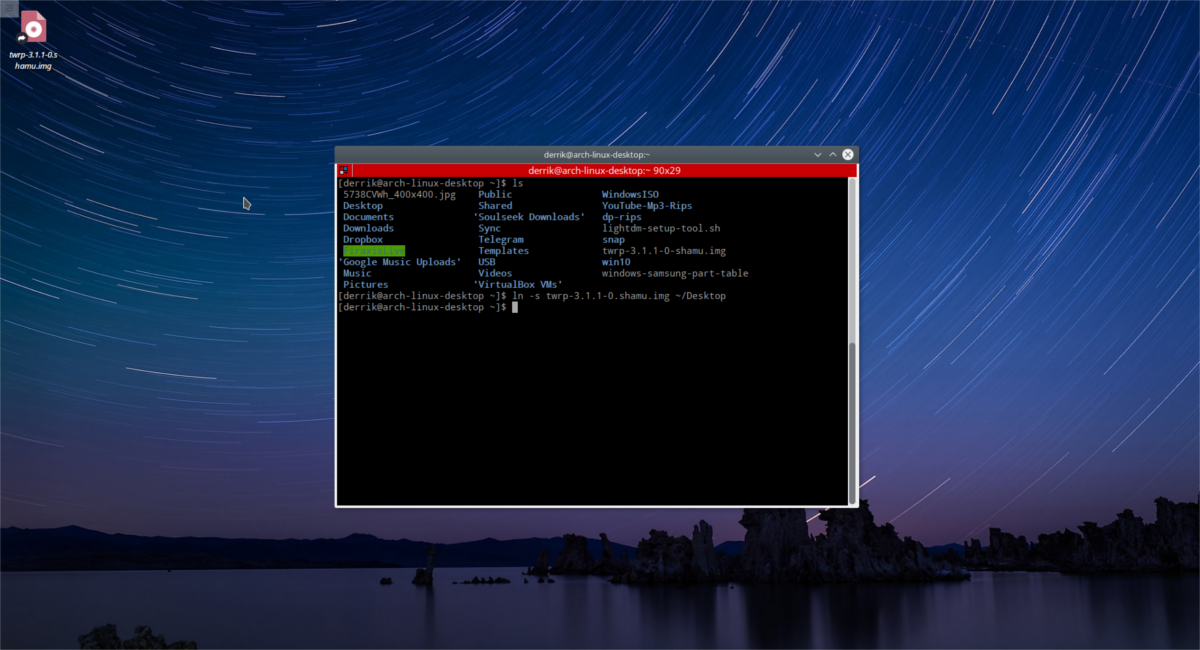There are a whole lot of mundane issues on Linux that a whole lot of customers don’t assume a lot of which are extremely helpful. When new customers learn to use these mundane, boring little methods, they change into higher Linux customers. Bind-mounts and Symlinks on Linux are a major instance of this. On this article, we’ll talk about simply precisely what is a symlink, learn how to create one and what they’re for. We’ll additionally go over learn how to create bind mounts, why they’re so helpful, and even present customers learn how to beef up their bind mounts with bindfs!
SPOILER ALERT: Scroll down and watch the video tutorial on the finish of this text.
What Is A Symlink?
A symlink, or “symbolic link” is a reference to a different file or folder some other place on the file system. For instance, most builders, as an alternative of duplicating libraries on a consumer’s system, will as an alternative have their code create symbolic hyperlinks to library folders and program information. This permits this system to simply have all of the required instruments and library information it must run, with out creating additional cruft.

Symlinks are additionally used when referencing information between completely different partitions and drives. For instance: your total music library is saved on laborious drive B, and the complete library’s dimension is 500 GB. On account of how giant it’s, it’s not potential to immediately transfer the music library to Laborious Drive A (aka the system drive).
To simply clear up this drawback, customers could make a symbolic hyperlink and reference every file from drive B to drive A. That means the music participant can discover and entry all music information simply.
Utilizing Symlinks
Symbolic hyperlinks can be utilized in two methods: to hyperlink a whole listing, or a single file. Right here’s learn how to create them.
Symlink a file
To symlink a file, first open a terminal. Subsequent, cd to the listing with the file to be linked.
cd ~/path/to/file
Create the symbolic hyperlink. Have in mind the place the hyperlink ought to go.
ln -s original-file /path/the place/hyperlink/goes
Symlink a folder
ln -s /path/to/unique/folder /path/the place/linked/folder/goes
Delete a symlink
cd /path/the place/symlink/is rm symlinkname unlink symlinkname
What Is A Bind-mount?
A bin-mount is a solution to present contents of 1 folder in as soon as place on the file system in a unique listing. Bind mounting sounds so much hyperlink symbolically linking a folder, however it is rather completely different. The bind mount may be very helpful. System directors usually use this methodology to rapidly add extra storage to a folder on the fly when the principle system’s file system is ‘read only’. Bind-mounts can be used to rapidly bind a community share to an area listing, with out the necessity to arrange a mount level within the fstab file, and and so forth.
Utilizing Bind-mounts With The Constructed-in Linux Kernel Command
The Linux kernel has a in-built bind command. It’s due to this, customers can simply mount the contents of directories throughout the file system with ease. Right here’s learn how to do it.
Consider a listing that has information you’d prefer to mount in one other location. Once you’ve acquired the placement in thoughts, consider the place you’d prefer to mount it to.
On this instance, we’ll bind a music listing from one laborious drive to the opposite.
sudo mount --bind /mnt/DataDrive/Music /house/consumer/Music
Unmount the bind mount with:
umount /house/derrik/Music
BindFS
Earlier than making a bind-mount, you’ll want to put in bindfs. It’s a software that makes bind mounting potential, and likewise provides additional performance (permission settings, higher mirroring and and so forth). Right here’s learn how to get it in your Linux distribution:
Ubuntu
sudo apt set up bindfs
Debian
sudo apt-get set up bindfs
Arch Linux
Bindfs isn’t within the official Arch software program sources, sadly. If customers need to use bindfs, they’ll want to put in this AUR package as an alternative.
Fedora
sudo dnf set up bindfs
OpenSUSE
sudo zypper set up bindfs
Different Linuxes
To get bindfs on the Linux distribution of your alternative, take into account going to the official bindfs website. Alternatively, open the package deal supervisor in your Linux PC, seek for “bindfs” and set up it!
Utilizing Bindfs For Bind-mounts
Utilizing bindfs has it’s benefits. The in-built kernel bind command works in a snap, however it’s very primary and doesn’t enable for some advance options resembling proscribing entry to binds and and so forth. Right here’s learn how to make use of bindfs.
Make a learn solely bind mount
bindfs --perms=a-w /path/to/the/unique/listing/ /path/to/bind/to/
Make a learn/write bind mount
bindfs /path/to/the/unique/listing /path/to/bind/to
Unmount a bindfs mount
sudo umount /path/to/bind/
Conclusion
Mundane operations like symbolic hyperlinks and bind mounts are in all probability the least explored topic on Linux resulting from the truth that they’re fairly uninteresting, and often go unused by normal customers. The actual fact is: once you study that symbolic hyperlinks allow you to rapidly and simply entry information anyplace, or that bind mounts could make it extremely straightforward to bolt on extra storage wherever you need, these topics change into way more fascinating.
